How much does a kitchen island cost and is it worth it?
Read our guide to find out how to find the best kitchen island for your budget

Lusting after a dreamy island unit? A kitchen island is one of the most popular kitchen ideas, and has long topped the ‘most-wanted’ charts, and for good reason. Not only do they look seriously impressive, a well-planned island unit can make light work of delivering dinner. When asking that all-important question, 'how much does a kitchen island cost?' design factors such as size, shape and special features all pay a part in the overall price.
‘The best kitchen islands create a true ‘working side’ of the kitchen. Countered with a ‘social side’ to provide seating for the breakfast rush hour or guests catching up before dinner,’ says Peter Humphrey, design director of Humphrey Munson.
Working out exactly how much all these benefits will set you back can prove tricky. It’s possible to bag a freestanding island that will add prep space, storage and room for bar stools to your kitchen layout, for less than £350 (hello, Ikea’s VADHOLMA!). Or you could go full footballer’s wife with an island longer than the average family car and loaded with exotic marble and top-end appliances.
For most of us, an island unit that comes in somewhere between £1,000-£4,500 is more manageable. As with any renovation budgeting, the key to getting exactly what you want within your means is to break down all the costs. Armed with this information, you can prioritise where you spend and where you save.
How much does a kitchen island unit cost?
We’ve identified the five main factors that will affect how much does a kitchen island cost.
1. Size
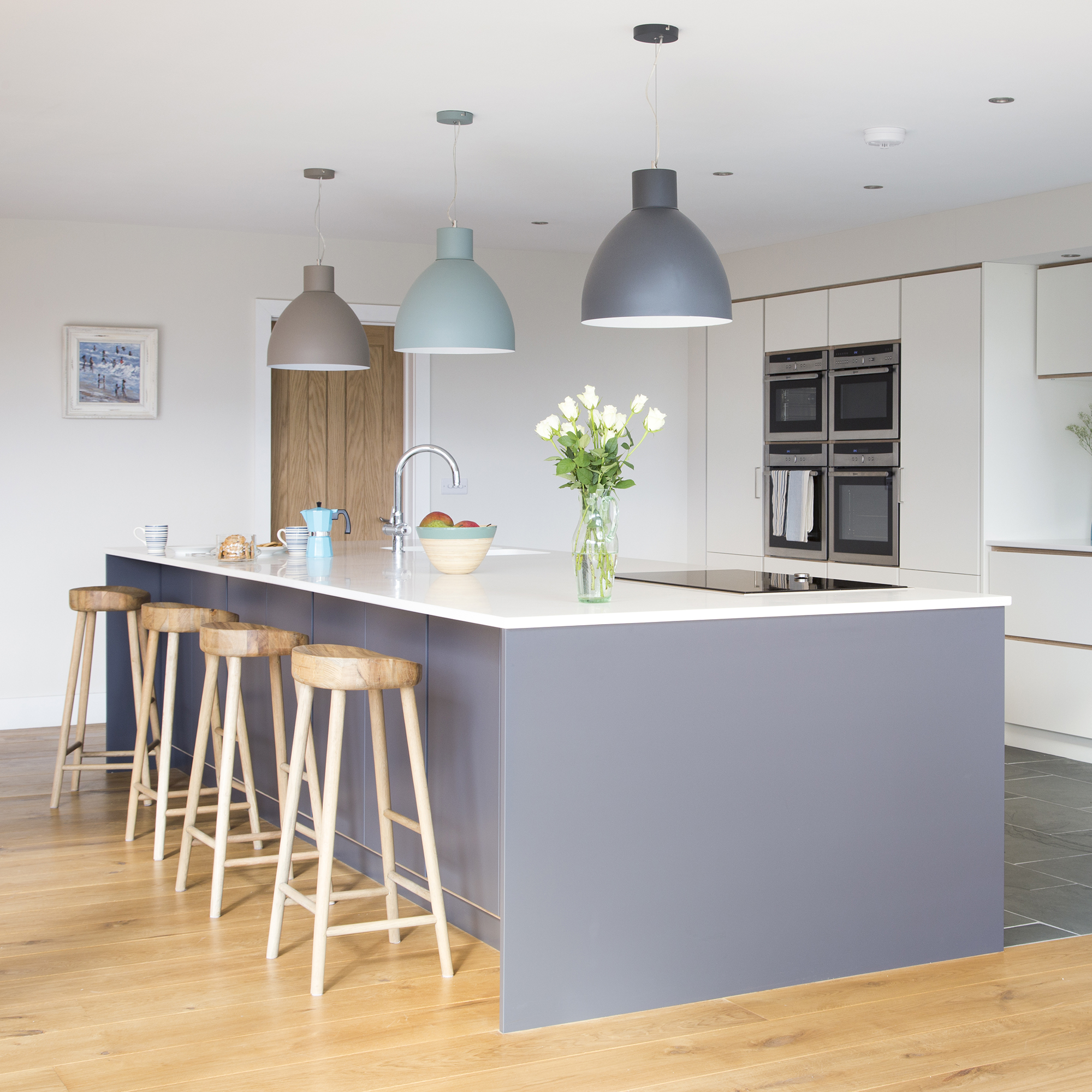
This is the big one (or not so big if money is tight!). Sure, it doesn’t cost that much more to add a couple of extra kitchen units in your island. That's until you realise the impact that has on the worktop costs, installation, painting, hardware and so on. Don’t go too small though; even a small kitchen island needs to be practical for it to be worthy of a place at all.
Establishing the negative space, i.e. the space between the island and perimeter units/other furniture, is a good way to work out what size island would work best in your space. ‘The golden rule is to allow 1-1.2m to move around easily. But there are times when going narrower is justified – for example when the dishwasher door is open,’ says Peter Humphrey.
Get the Ideal Home Newsletter
Sign up to our newsletter for style and decor inspiration, house makeovers, project advice and more.
You can often save money by sizing your island unit to work with standard worktop sizes. This means there’ll be fewer fabricating costs when fitting the tops. ‘Joints in the worktop can also be really obvious on island units that are centrally positioned and designed to be noticed,’ says Graeme Smith, head of retail design, Life Kitchens. ‘Islands longer than 3.5m usually require two slabs of worktop material, which means a joint will be unavoidable.’
2. Design
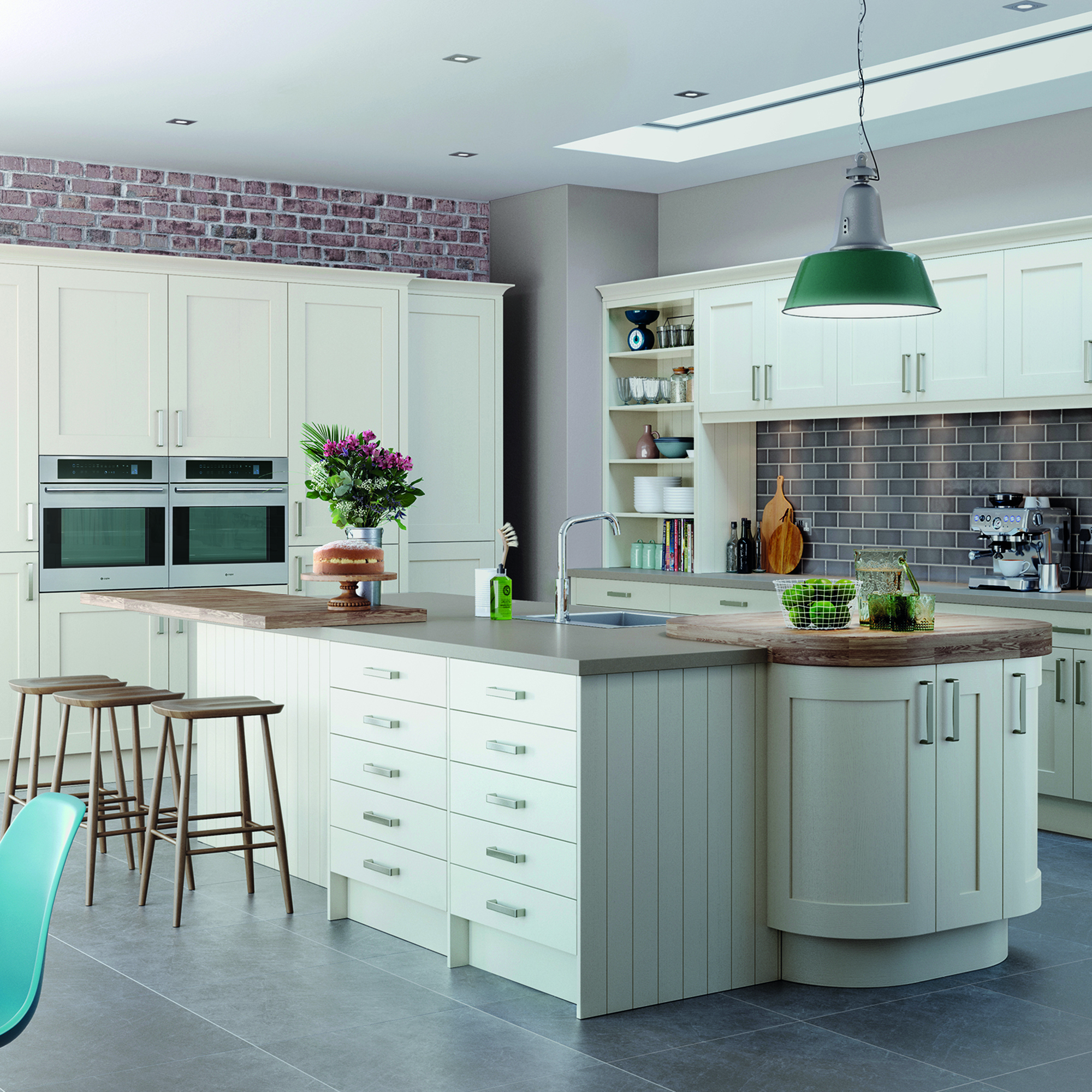
The more complex the design, the longer it will take to make, adding to the final bill. Standard shape islands – squares or rectangles – made using standard size/shape cabinets are your friend when counting the pennies. Curves and bespoke sizes will quickly bump up the budget because making curved and one-off cabinetry is labour-intensive.
There are ways to achieve more interesting island designs without breaking the bank. For example, curving the corners of your worktops is more affordable if you don’t curve the cabinetry beneath. So perhaps go with a curved breakfast bar with simple leg supports. Choose cupboards or open shelves instead of drawer units to free up funds for a fancier design. ‘It’s a brave move to step beyond classic rectangular designs but the pay-off can be huge in terms of visual impact,’ adds Jane Powell, kitchen designer at Roundhouse.
3. Materials
The cost of materials factors highly. You can build an island unit from standard kitchen units but if you put solid wood doors on (rather than a foil-wrap chipboard or ply) it'll cost more. Worktops can also make or break your island budget, especially if you go for fancy details like waterfall edges. This is where the worktop flows down to the floor at each end. Worktops that require specialist templating and installation – for example stone and composites – will cost more than surfaces you or your builder can install, like laminate or wood.
‘It’s important to consider how an island looks from all angles, especially if it’s taking up a large footprint,’ says Pierce Coyne, design manager, Kitchen Architecture. If budget is tight, focus your spending where it will be seen most frequently. This is why you’ll often see statement materials like burnished brass or designer tiles on the front elevation of an island. ‘Using shelving to create attractive displays on the front of an island is a good way to make it look more impressive and add personality,’ adds Pierce.
4. Extra features
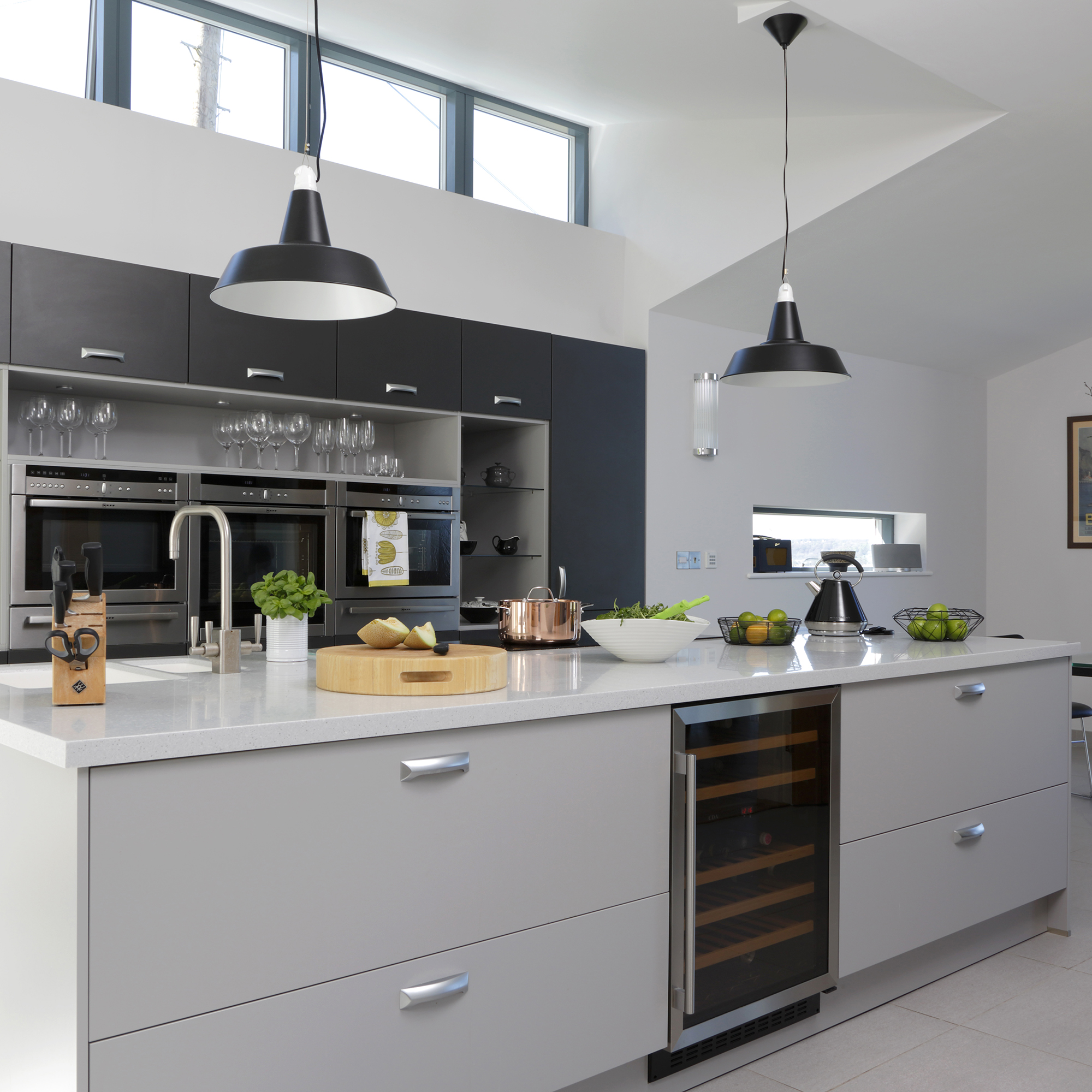
Additional equipment like sinks, hobs and other appliances will add up. Assuming you were having them in the kitchen anyway, it’s not the price of the individual items you need to consider. It's more the extra trades involved when getting them installed.
For example, a sink with a boiling water tap may require a plumber and electrician. There's also drainage materials and potentially draining grooves cut into your worktops. Keep it simple and leave the island for prepping, serving food and socialising if money is an issue.
5. Manufacturing style
The cost of manufacturing an island unit increases according to the amount of labour involved. Bargain seekers should consider an off-the-shelf island, preferably one designed to be put together DIY style. Next up are islands made from mass produced units, which offers more flexibility with design, shape and size but are still reasonably affordable. Finally, at the top-end of the market, you can commission a bespoke island unit that’s made just for you, from scratch, using virtually any material or finish you desire.
The manufacturing style can also have cost implications when it comes to installation. A flat-pack island unit from Ikea will have no installation costs if you’re handy with a screwdriver. Whereas a large bespoke island may take several days and several trades to install.
How much does a kitchen island cost to make bespoke?
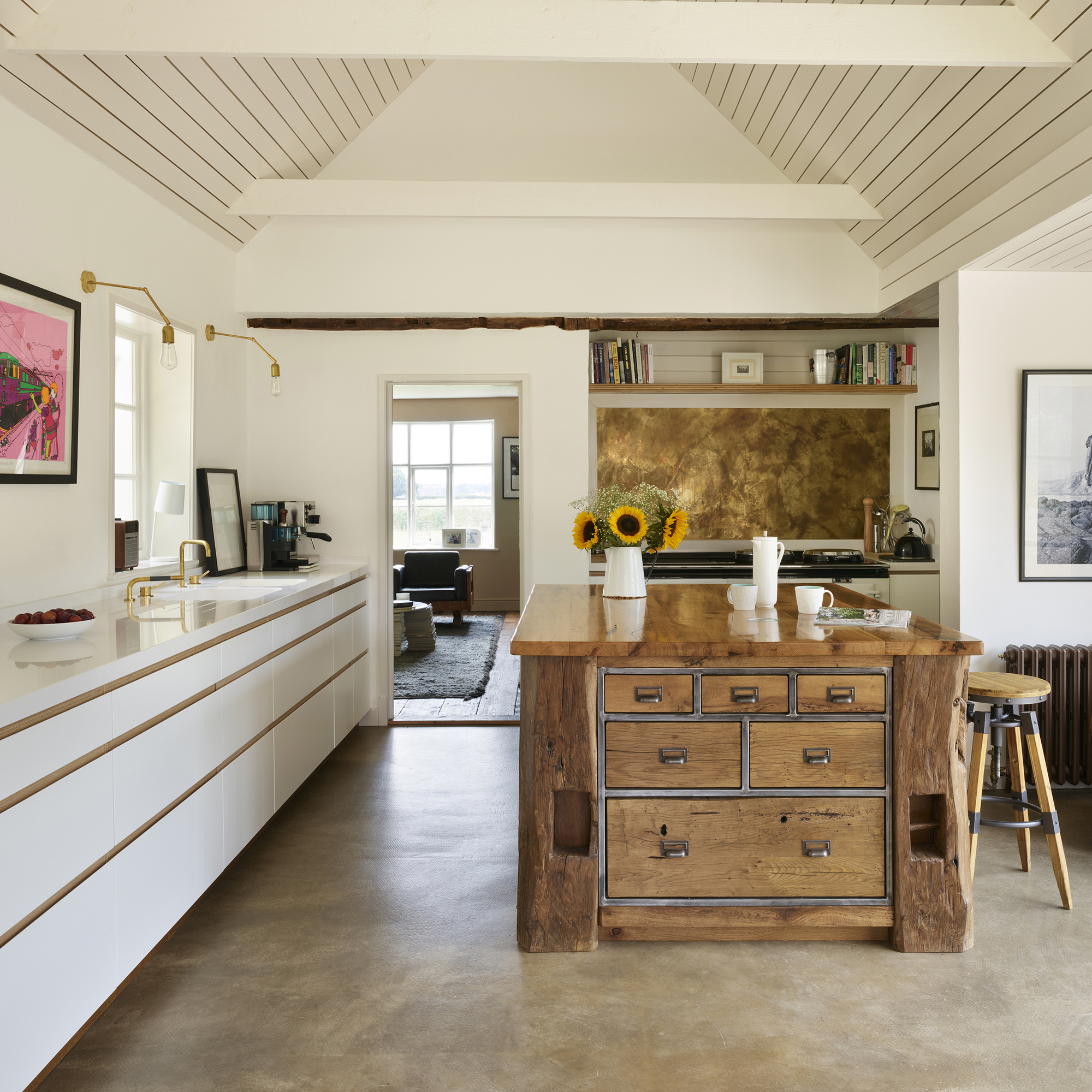
Anything in life that is made uniquely for you, from tailormade suits to original artwork, is always going to be more expensive than something churned out by machines. There are too many variables – size, materials, appliances etc – to put an exact figure on the cost of a bespoke island unit. You should be prepared to part with upwards of £5,000 for something special.
‘Buying bespoke is a great way to get a truly individual island design, and means you’re not constrained by the rigid dimensions or shapes of standardised cabinetry sizes,' says bespoke maker Nick Clayton, director of Clayton Cabinets. 'You also get a chance to be a part of the creative process and can incorporate interesting materials and finishes, like reclaimed timber or striking stones.
When buying bespoke it's important to establish a clear budget from the outset. A good maker will detail the costs involved and will be willing to help you make savings where possible.’
Can you buy a kitchen island on its own?
Yes, you don’t need an entirely new kitchen to add an island to your scheme. As long as space allows, introducing an island unit can transform the functionality and look of your current kitchen.
Some kitchen suppliers won’t just sell you a lone island, but many will. Alternatively, you can buy freestanding islands from places like The Cotswold Company or Neptune. Don’t be afraid to try bespoke kitchen-makers. Many are happy to make individual items, like island units, and may be able to fit you in between larger jobs.
If you're feeling handy, there are lots of DIY kitchen island ideas and upcycling tips to explore.
Does a kitchen island add value?
When assessing if the cost of adding a kitchen island is worth it, it's important to look at what value it adds. A kitchen island is the single-most requested feature for new kitchens, which suggests they are indeed very desirable and therefore likely to add value to your home.
A well-designed, attractive island unit with plenty of space around it and room for bar stools will undoubtedly improve the value of your home, and lifestyle. Beware of cramming an island unit into a kitchen that doesn’t have sufficient space. If an oversized, cheap-looking or badly designed island makes the kitchen look cramped, ugly or unusable, it could actually put buyers off, not to mention make your life a misery.
How much does it cost to install a kitchen island?

It doesn’t cost anything, beyond a little effort, to install a freestanding island unit you’ve bought off-the-shelf. The cost of installing a fitted island unit will depend on who is doing it and his or her fees. If you get a builder or fitter to quote a day rate, make sure they give you an idea of how many days it might take.
Two days should be more than sufficient for all but the most complicated island design. Extra costs to consider include any work by a plumber or electrician, and don’t forget to add in the worktop fabricator’s fitting charge, if applicable.

Linda Clayton is a professionally trained journalist, and has specialised in product design, interiors and fitness for more than two decades. Linda has written for a wide range of publications, from the Daily Telegraph and Guardian to Homes & Gardens and Livingetc. She has been freelancing for Ideal Home Magazine since 2008, covering design trends, home makeovers, product reviews and much more.
-
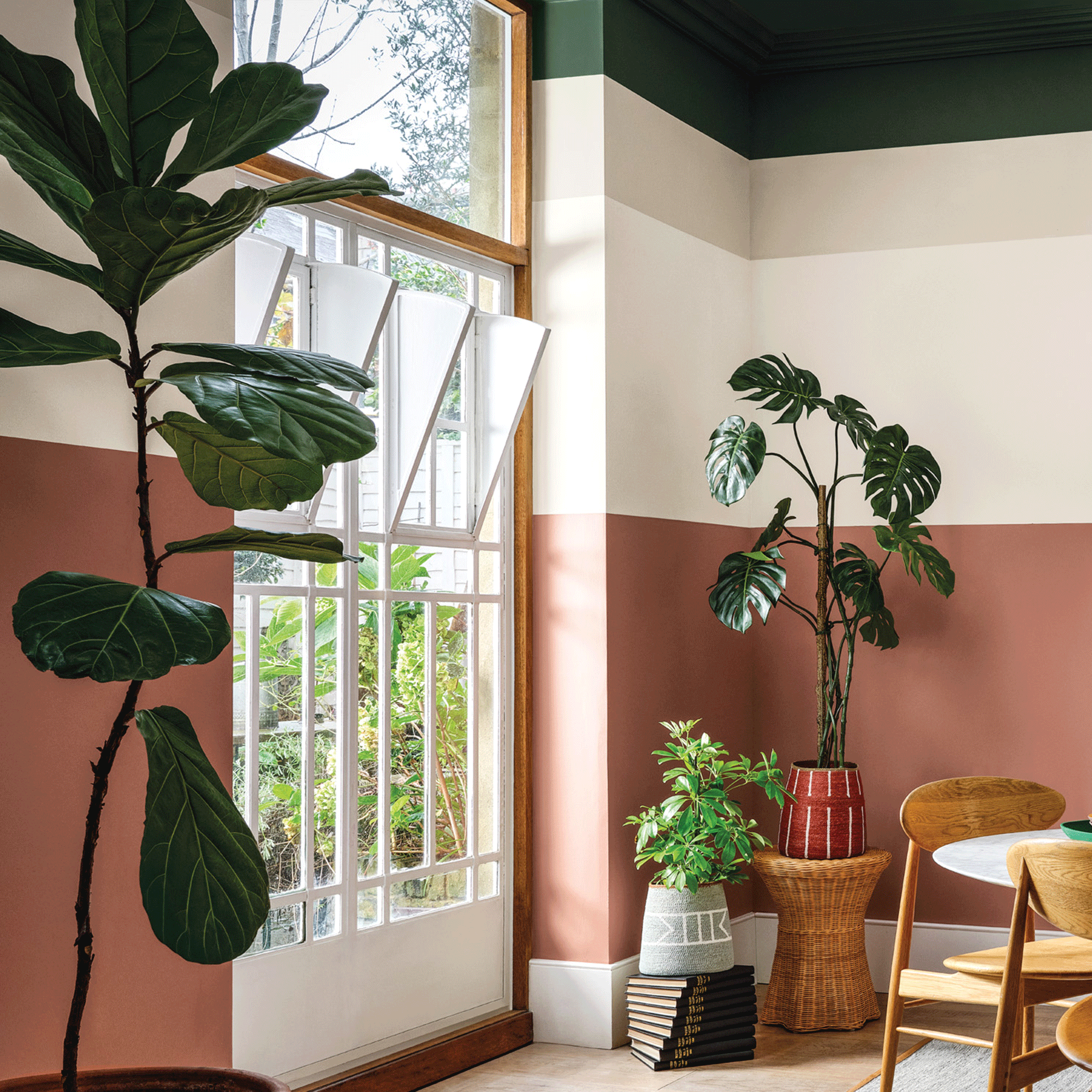 Crown Paint has launched new wall colours for the first time in three years, and changed how I think about neutral shades
Crown Paint has launched new wall colours for the first time in three years, and changed how I think about neutral shadesIs terracotta the ultimate neutral?
By Rebecca Knight
-
 How to protect seedlings from birds – experts say there's a kind and clever way to stop them pecking
How to protect seedlings from birds – experts say there's a kind and clever way to stop them peckingYes, you can protect seedlings from birds without harming your feathered friends...
By Kayleigh Dray
-
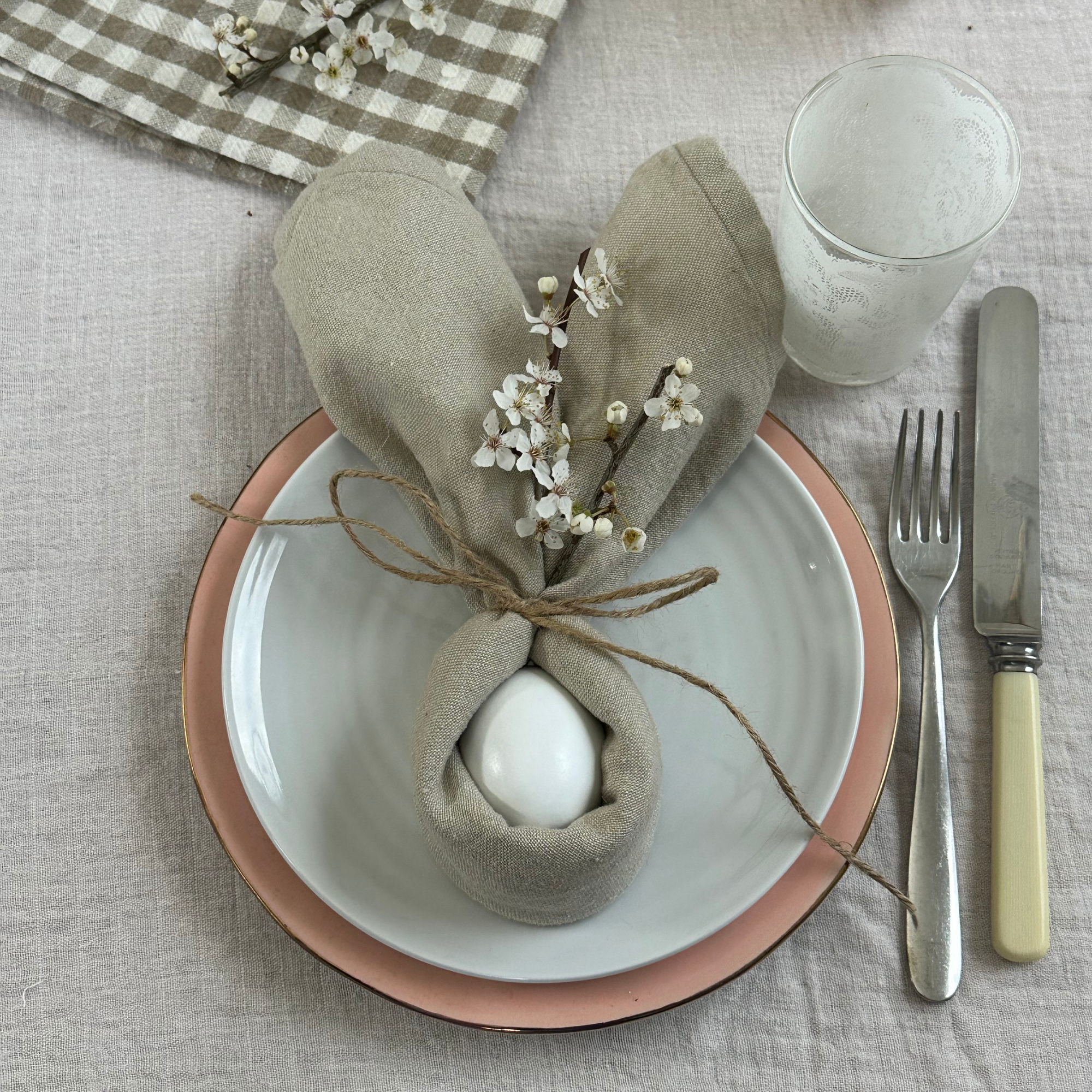 We tried the viral napkin bunny ears hack – it only takes five minutes and will take your Easter table to the next level
We tried the viral napkin bunny ears hack – it only takes five minutes and will take your Easter table to the next levelThis Easter craft is not only beautiful, but really easy to do
By Kezia Reynolds